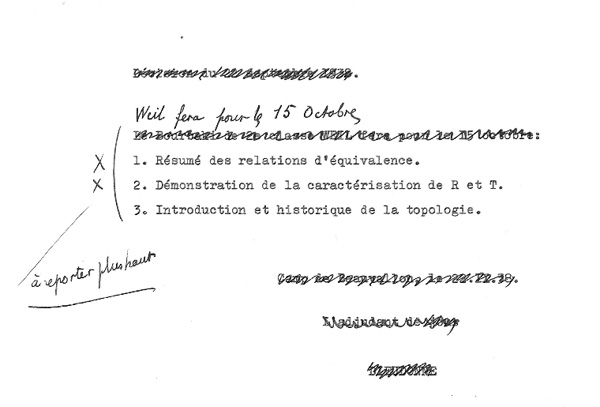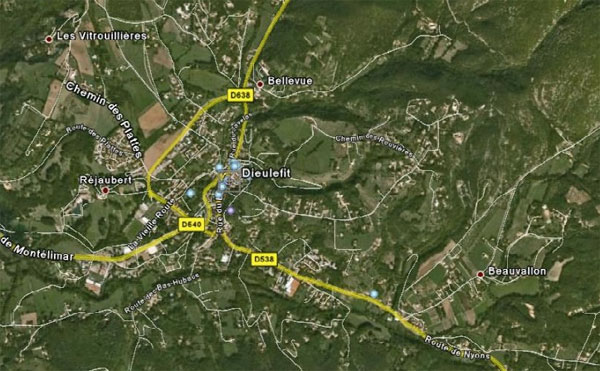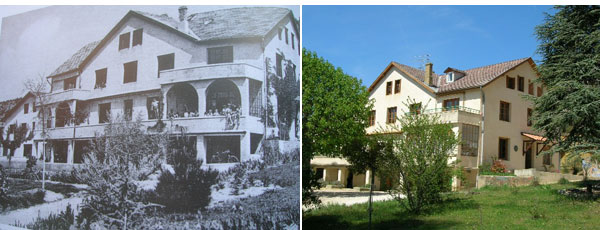In this series I’m trying to make sense of the inclusion of Nicolas Bourbaki in the storyline of Trench, the fifth studio album by American musical duo Twenty One Pilots (or TØP).
That story is about the walled city of Dema, ruled by nine bishops dressed in red cloaks. They enforce their religion, called Vialism, on the inhabitants of Dema. The end-goal in Vialism is that you take your own life, having maximal impact (think: suicide bombers).

Outside the walls of Dema is the land of Trench, where a group of fighters (the Banditos) set up camp. They are dressed in grey trenchcoats adorned with yellow ribbons, and their goal is to help people escape from Dema, via its east side.
What on earth has the Bourbaki group to do with any of this?
We know from a tweet by Tyler Joseph that one Bourbaki-photograph (or at least a PhotoShopped version of it) played an important role in the creative process, as he used it as the background image on his Mac while producing the album.
It can also be seen, blurred in the background, in the opening seconds of his interview with Zane Lowe on Apple Music:
Here are the three versions: the original photo, overlayed with the tweet-image, and a screenshot from the interview:

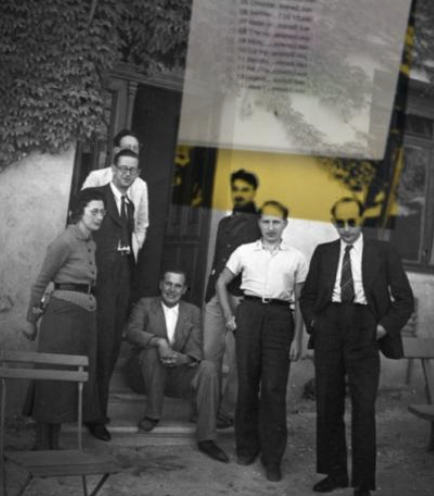
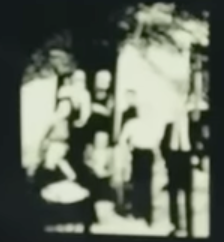
In the original photo, taken at the 1938 Dieulefit Bourbaki congress, we see seven people, from left to right
- Simone Weil (not Bourbaki, sister of Andre Weil)
- Charles Pisot (chrysalide, Bourbaki member after WW2)
- Andre Weil, partially hidden (Bourbaki founding member)
- Jean Dieudonne, sitting (Bourbaki founding member)
- Claude Chabauty (chrysalide, Bourbaki member during and after WW2)
- Charles Ehresmann (Bourbaki founding member)
- Jean Delsarte (Bourbaki founding member)
In the overlayed image an additional eight person, a bearded man, is PhotoShopped in the doorway, and in the screenshot we see that apart from this mystery man the empty chair in the lower left corner is replaced by a ninth person.
Common belief among the ‘clique’ (TØP’s fanbase name) is that the nine people in the desktop image are the nine bishops of Dema, with the bearded man being Nico (the head-bishop), Andre Weil bishop Andre, and Simone Weil bishop Sacarver (the only known female bishop).
But who are these two additional persons?
In a remarkable tour de force, Reddit user ‘banditosleepers’ was able to find the man sitting in the lower left corner (though he identified him wrongly)
I found one of the people shopped into Tyler’s desktop (2018)
by u/banditosleepers in twentyonepilots
There’s this other famous pre-WW2 photo of a Bourbaki congress, this time the 1937 congress in Chancay:
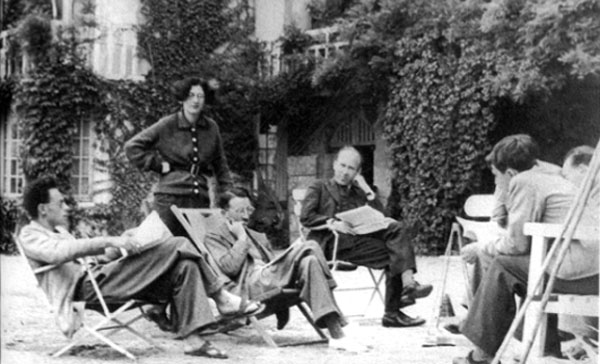
Here we see, from left to right:
- Andre Weil
- Simone Weil (standing)
- Henri Cartan (Bourbaki founding member)
- Szolem Mandelbrojt (Bourbaki founding member)
- Claude Chevalley (sitting on the bank, Bourbaki founding member)
- Jean Delsarte (partially hidded)
That is, the ninth person, sitting in the left lower corner of the screenshot is Szolem Mandelbrojt (and not Claude Chevalley, as claimed in the Reddit-post).
There’s another photo, taken at about the same moment, showing that also Jean Dieudonne (sitting on the bank in front next to Andre Weil) and Charles Ehresmann (sitting on the bank on the right, next to Jean Delsarte and Claude Chevalley) were present.

Several people (myself included) have wasted too many hours trying to identify the bearded man in the doorway, starting from the assumption that he too might have some connection with Bourbaki (either the group or the general), without success.
There’s one problem with the ‘bearded man = Nico’ hypothesis. Nico is supposed to be the tallest of the bishops, and bearded man’s head is level with Andre Weil’s head, who stand on the first step, so bearded man must at least be 15cm smaller than Andre, who was already rather short.
Here’s a theory.
The original Dieulefit 1938 photo is the first one on the Wikipedia page for Nicolas Bourbaki, and if you click on it you get a link to one of my own blogposts Bourbaki and the miracle of silence.
In that post (from 2010) I found the exact location where that photo was taken: the Ecole de Beauvallon, founded in 1929 by Marguerite Soubeyran and Catherine Krafft, which was the first ‘modern’ boarding school in France for both boys and girls having behavioural problems. From 1936 on the school’s director was Simone Monnier.
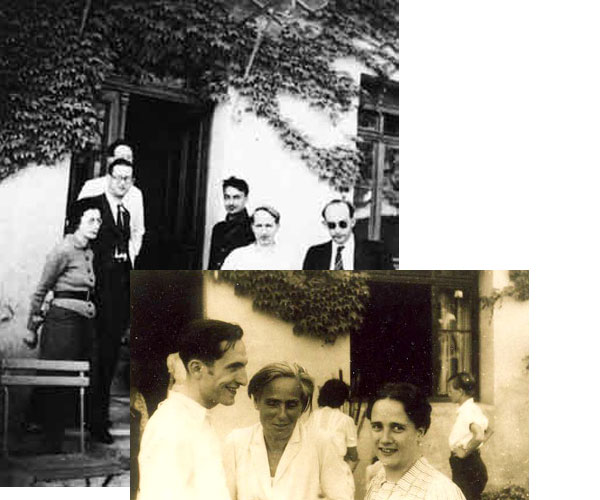
The lower picture is taken at the Ecole de Beauvallon in 1943, the woman in the middle is Marguerite Soubeyran.
From 1936 on, about 20 refugees from the Spanish civil war found a home at the school, and in the ‘pension’, next to the school. When WW2 started, about 1500 people were hidden from the German occupation in Dieulefit (having a total population of 3500) : Jewish children, intellectuals, artists, trade union leaders, many in the Ecole and the Pension. None were betrayed to the Germans, and this is called Le miracle de silence à Dieulefit.
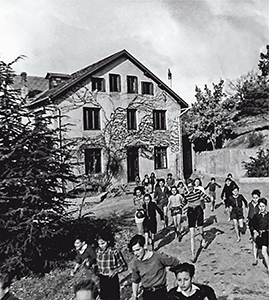
Given this historical context, there is only one possible way to include this Bourbaki-photo in the Trench-storyline: the Ecole de Beauvallon is the equivalent of the Bandito-camp, and the Bourbakis are Banditos (or at the very least, refugees having found a safe place in the camp).
In hindsight this was already given away by Tyler Joseph in that he gave the photo the color yellow, specifically Bandito-yellow 0xFCE300, which the bishops are unable to see (they see it as grey).
How does this help in identifying the bearded man in the doorway?
Standing in the doorway, he’s the one feeling at home there, gathering around him his guests or fellow fighters. My conjecture is that he is the leader of the bandito-camp, as seen at 2.12 in the movieclip of Levitate.
Granted, it is not a perfect match. I think ‘bearded man’ is how Tyler Joseph envisioned the camp-leader, and included his picture in the ‘Trench Bible’, the 60 page booklet given to the movie-director, who did the casting some months later.


Next time we will try to find City of Dema, or at least what it should be if you take the inclusion of Bourbaki in the Trench storyline seriously.
In this series:
- Bourbaki and TØP : East is up
- Bourbaki = Bishops or Banditos?
- Where’s Bourbaki’s Dema?
- Weil photos used in Dema-lore
- Dema2Trench, AND REpeat
- TØP PhotoShop mysteries
- 9 Bourbaki founding members, really?
- Bourbaki and Dema, two remarks
- Clancy and Nancago
- What about Simone Weil?
- Vialism versus Weilism
- The dangerous bend symbol
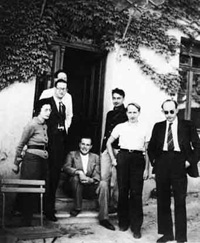 First, the few facts we know about this Bourbaki congress, mostly from
First, the few facts we know about this Bourbaki congress, mostly from 